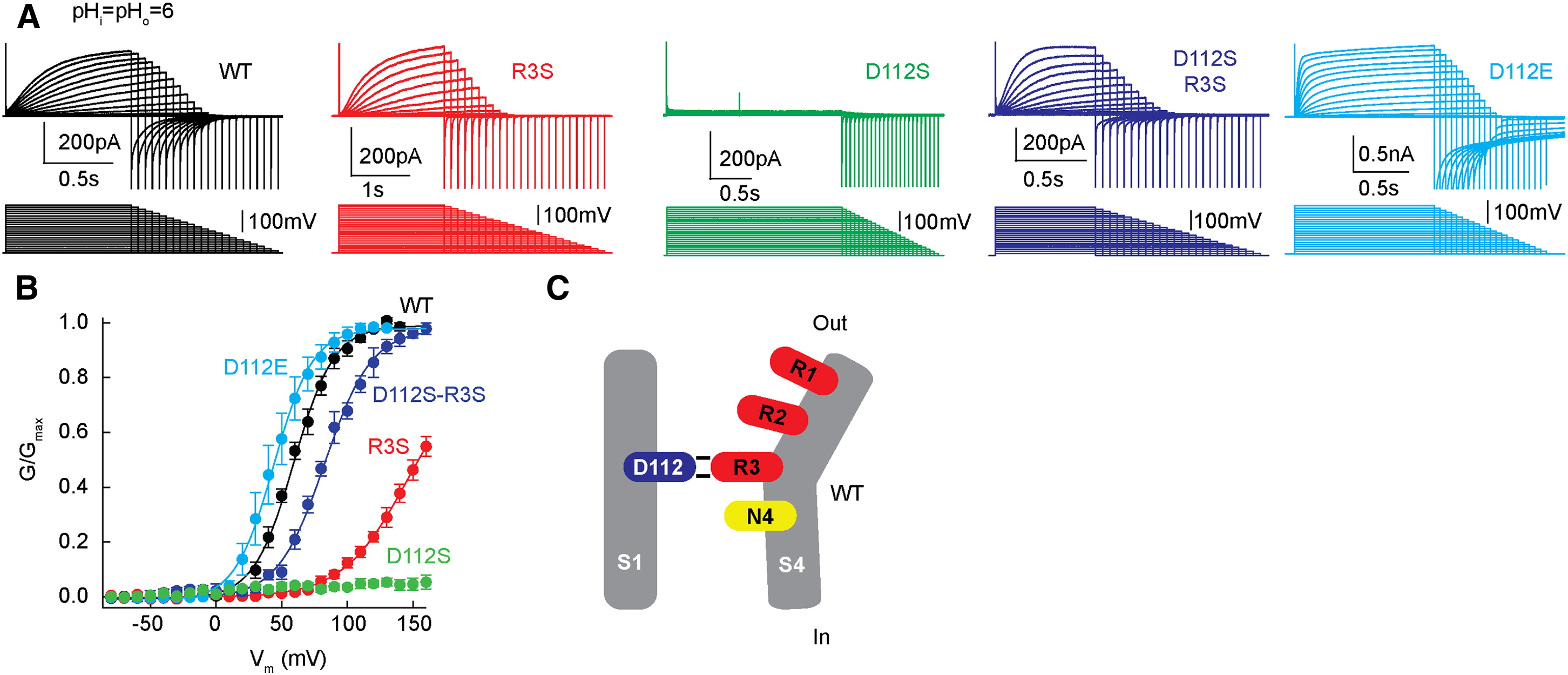
The pore of the voltage-gated proton channel
Abstract
In classical tetrameric voltage-gated ion channels four voltage-sensing domains (VSDs), one from each subunit, control one ion permeation pathway formed by four pore domains. The human Hv1 proton channel has a different architecture, containing a VSD, but lacking a pore domain. Since its location is not known, we searched for the Hv permeation pathway. We find that mutation of the S4 segment’s third arginine R211 (R3) compromises proton selectivity, enabling conduction of a metal cation and even of the large organic cation guanidinium, reminiscent of Shaker’s omega pore. In the open state, R3 appears to interact with an aspartate (D112) that is situated in the middle of S1 and is unique to Hv channels. The double mutation of both residues further compromises cation selectivity. We propose that membrane depolarization reversibly positions R3 next to D112 in the transmembrane VSD to form the ion selectivity filter in the channel’s open conformation.